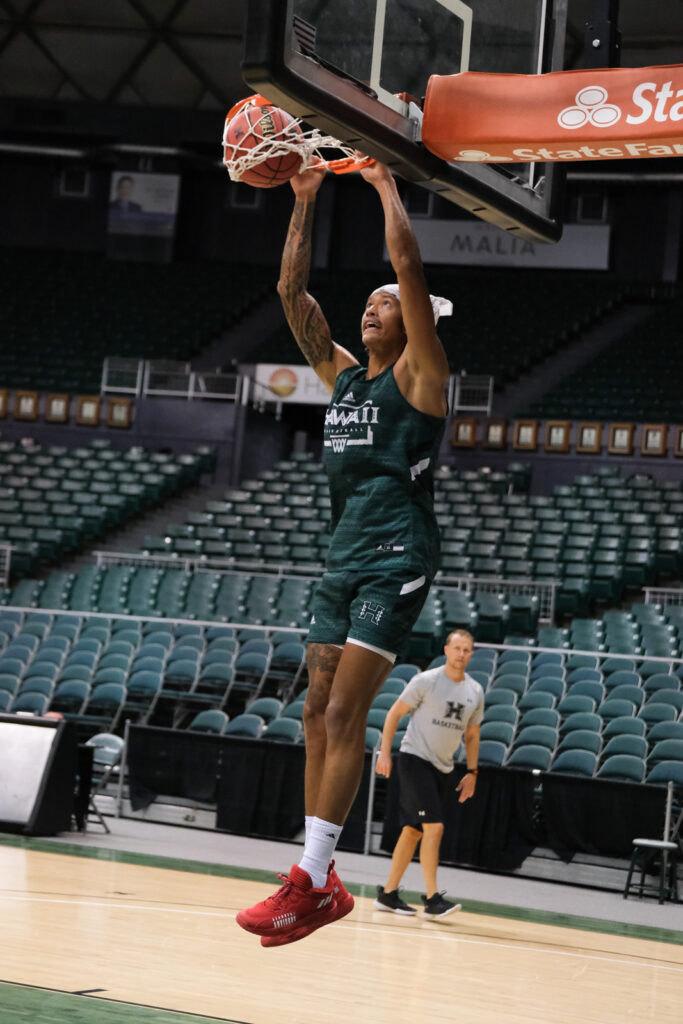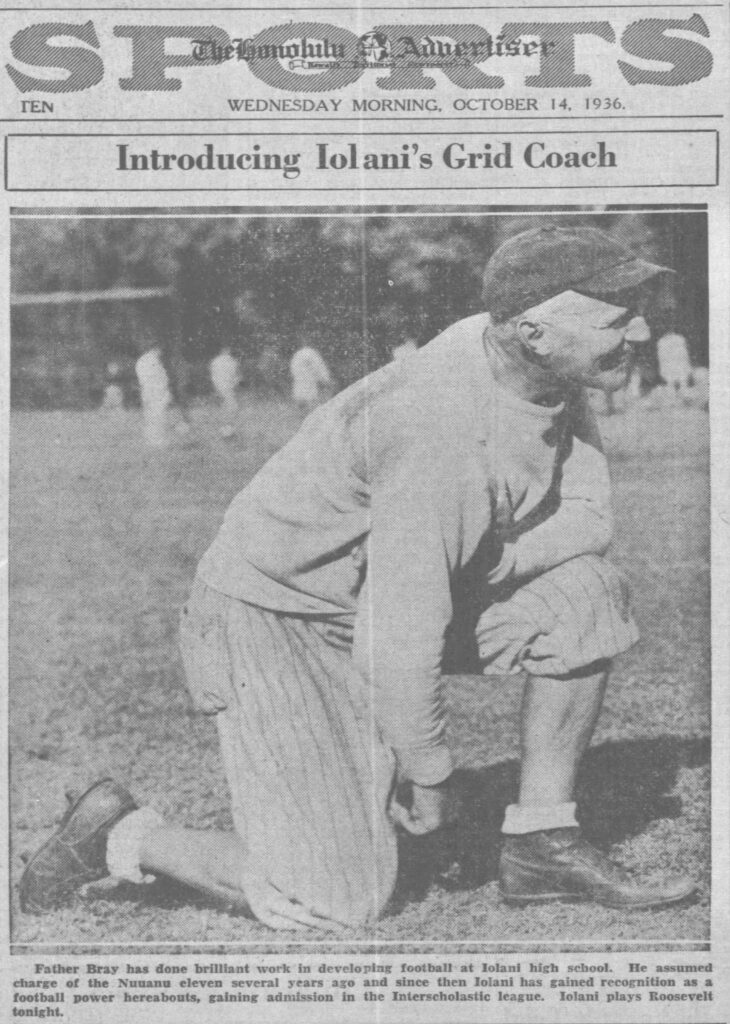
The year was 1913, and the day was Feb. 1: Woodrow Wilson was recently elected but not yet inaugurated as the 28th President of the United States. Hawai’i was still a U.S. Territory, having been annexed less than 15 years prior.
And the College of Hawai’i, established in 1907, had just moved to its new campus in Manoa from temporary quarters in Makiki, near Thomas Square.
At or around 7:15 p.m., inside the old Nu’uanu YMCA (different location from the present one), a referee tossed up the ball and just like that — college basketball was born in the Islands.
Well … a college basketball TEAM was born. The College of Hawai’i (it became UH seven years later, in 1920) sent out its first starting five against a quintet from McKinley High School. Well … mostly from McKinley, with a couple of “all-stars” added in due to roster absences.
It was a tight game, with Hawai’i emerging victorious, 14-13.
Hawai’i’s starting five consisted of guards Cousens and Pratt, forwards Meinecke and Starratt, and center Marcallino. Sorry, it appears athletes were not on a first-name basis with the media back then, as those were not mentioned.
The game article in the next day’s Honolulu Advertiser was all of two paragraphs long, saying the meeting was “lively throughout and very exciting and there was some real good playing on both sides.”
Curiously, the headline called it a “BUSHER GAME,” and the story led off with, “In an off game played at the YMCA games hall …”
Such words and descriptions like “BUSHER” and “off game” would be odd and even offensive today, but they probably were used because the College of Hawai’i team was indeed the new kid on the block, and not a member of any established league.
Keep in mind the “program” looked nothing like the NCAA Division I version we have today. College of Hawai’i did not even have a coach yet, only an unnamed “manager” who arranged the McKinley game. There was no set season schedule — other than a return game against McKinley at the same “Y” the following week.
In an article on Feb. 4, 1913, the Star-Bulletin commented, “there is no doubt but that fast ball will again be played” in the rematch. Turned out to be true … sort of. If “fast ball” meant a 23-13 score, again with Hawai’i on top.
The Star-Bulletin mentioned that “when the College team defeated High (on Feb. 1) they played a fine game. Two of the College’s strongest and best players are Meinecke and Marcallino and they showed their worth … Marcallino, who is captain of the team, plays center and plays it well.”
Of Meinecke and Starratt, the Star said “both are fast, but Meinecke excells (sic) a little on basket shooting and team work (sic). Pratt and Cousens make two splendid guards and finish up a team that has a good future before it. Substitutes … are Clark, Lemke and Barnhart.”
Lastly, the Star-Bulletin article gave a positive outlook for the future of Hawai’i college basketball, which thankfully the program lived up to in the next 110 years:
“This is the first year the College has taken up basketball, but judging from the energetic way in which the players are pushing things this year, the(y) intend to make the sport stick. The College contains many good athletes as has been demonstrated, and all that was necessary was for them to get together in order to make themselves seen and heard on the athletic field.
“Much is to be expected from the college in that line.”















